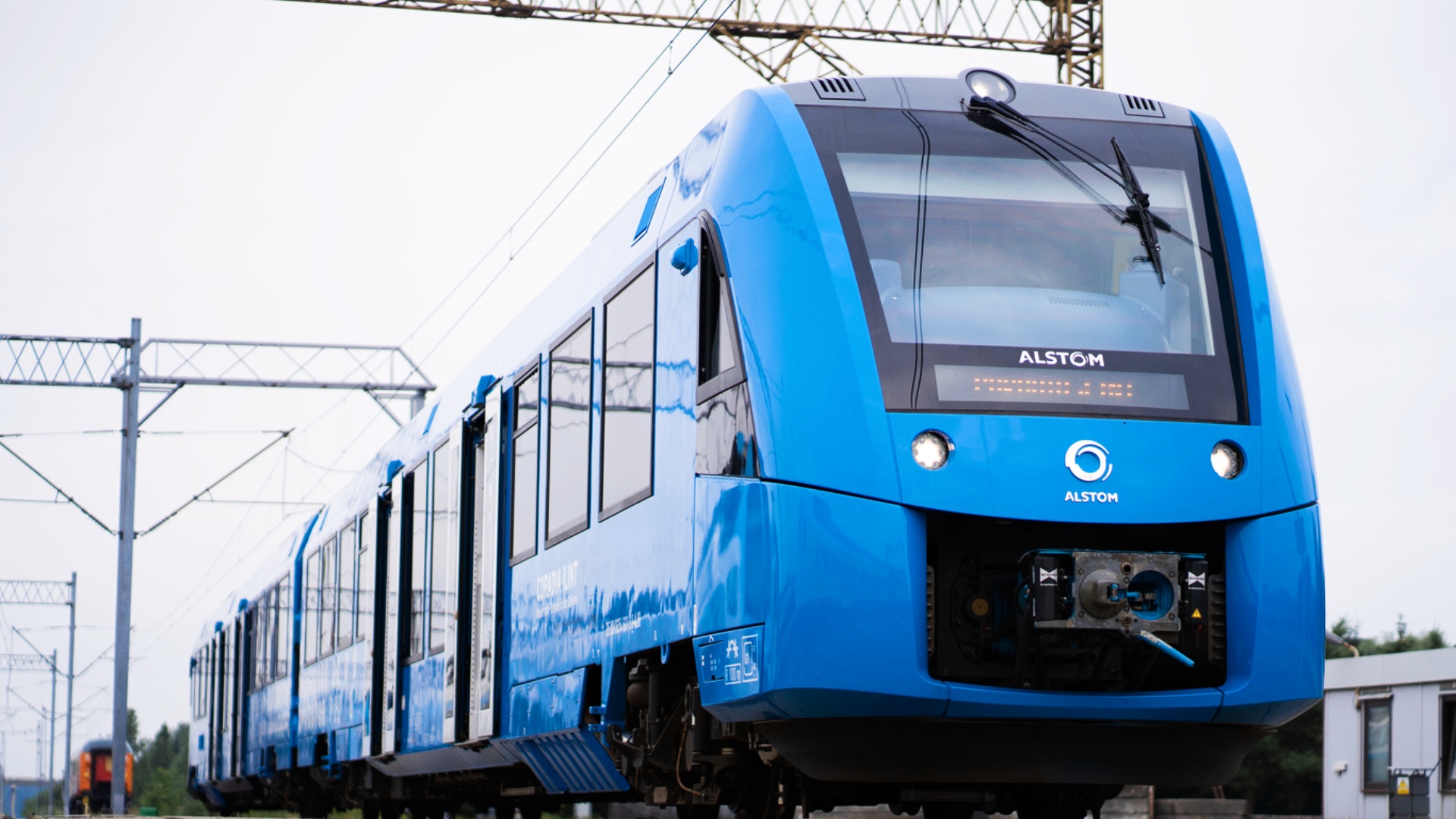A regional train operator in Germany has become the first rail company to utilise 100% hydrogen fuel cells. Could Alstom quickly become trailblazers for a cleaner industry?
While diesel locomotives continue to spew toxic nitrous oxide into the atmosphere, a regional train operator in Germany is releasing purely water vapour.
That’s thanks to a new fleet of trains which run entirely on hydrogen. Situated between the lower Saxony towns of Cuxhaven and Buxtehude, regional rail company LNVG is using trains purchased from French transport firm Alstom – all of which are kitted out with its green technology.
This represents a huge milestone for the industry: the first entirely emission free railway journey.
Instead of a smokestack burning diesel, these passenger trains use hydrogen fuel cells to generate power. Placed on the roof of one of the cabs, this device filters in oxygen and combines it with hydrogen to make hydrogen oxide. As previously mentioned, the only by-product is harmless water vapour.
Alstom’s blue locomotives, which are pleasingly plastered in ‘H’ and ‘O’ to celebrate this ecological feat, aren’t just pushing boundaries in an environmental sense either. There are many practical benefits to ditching oil (and electricity hybrids) for hydrogen.
Around half of all rail lines in Europe have already been electrified, but fitting trains with the necessary wiring to run purely on electricity has been too costly to break out at scale. Hybrids are more popular, but critically do not remove fossil fuels from the process.



















